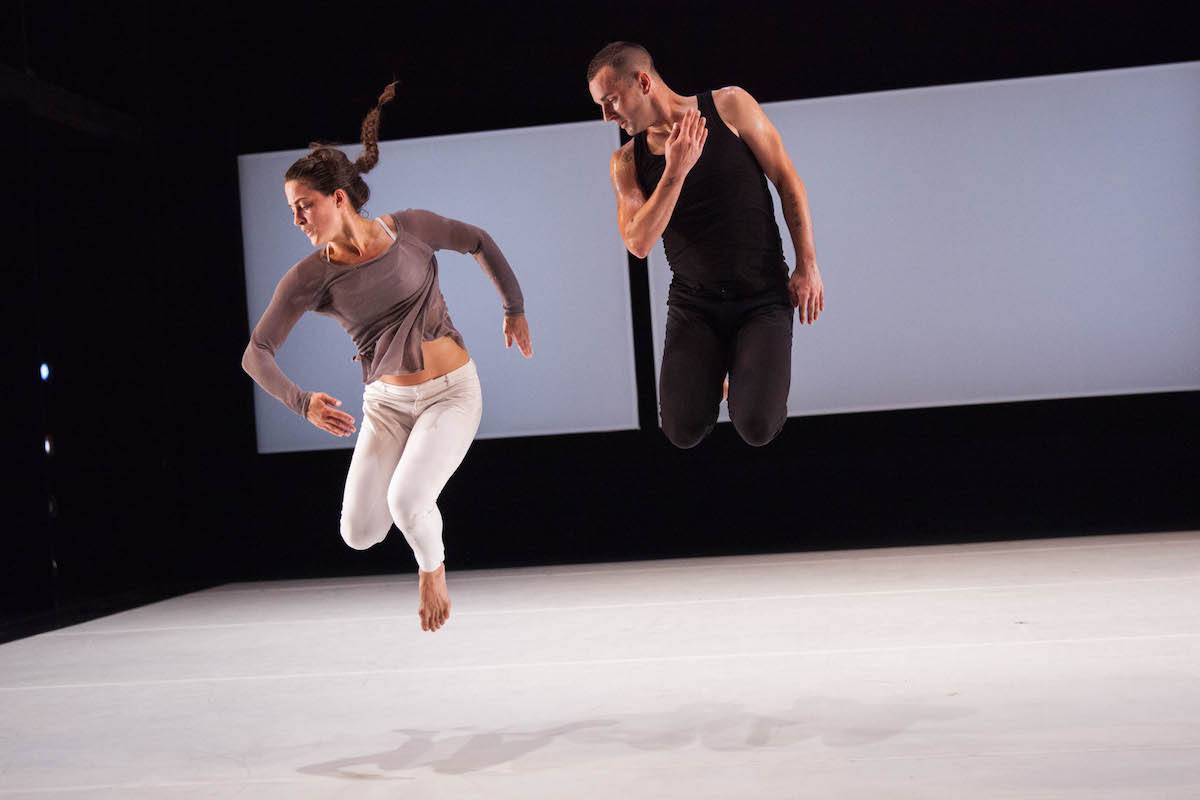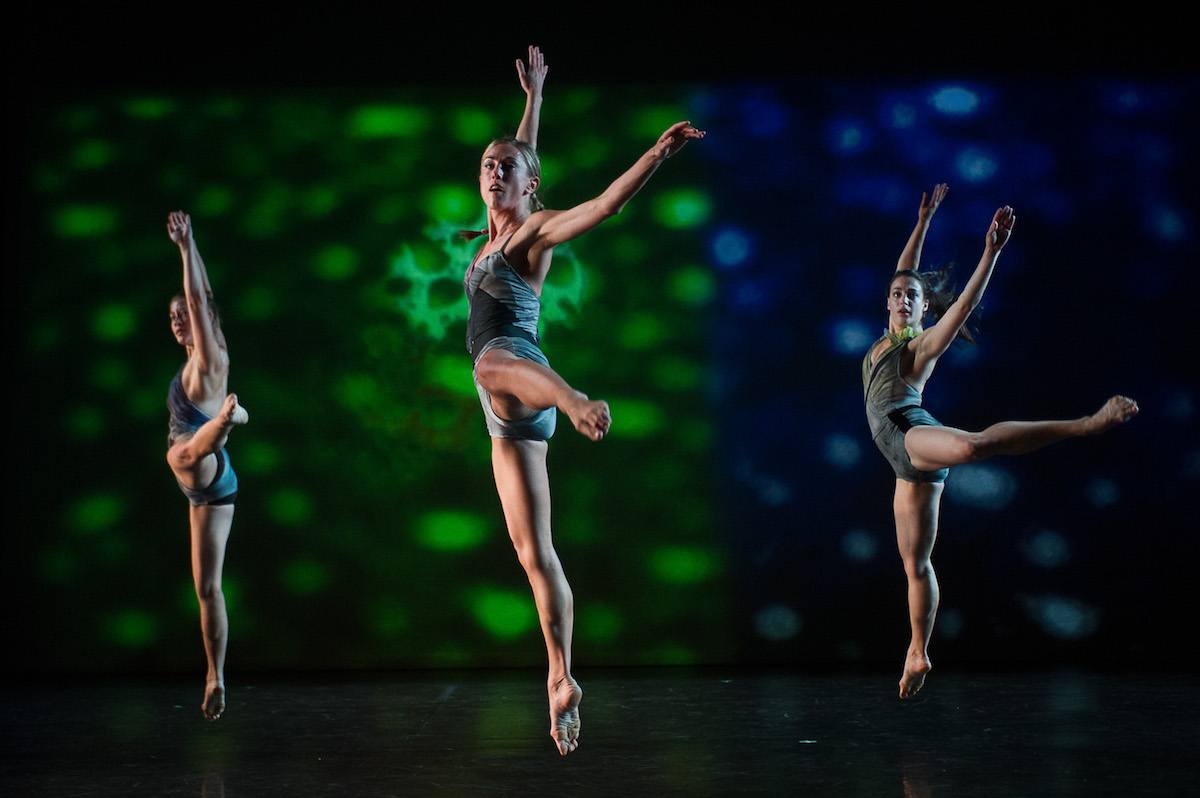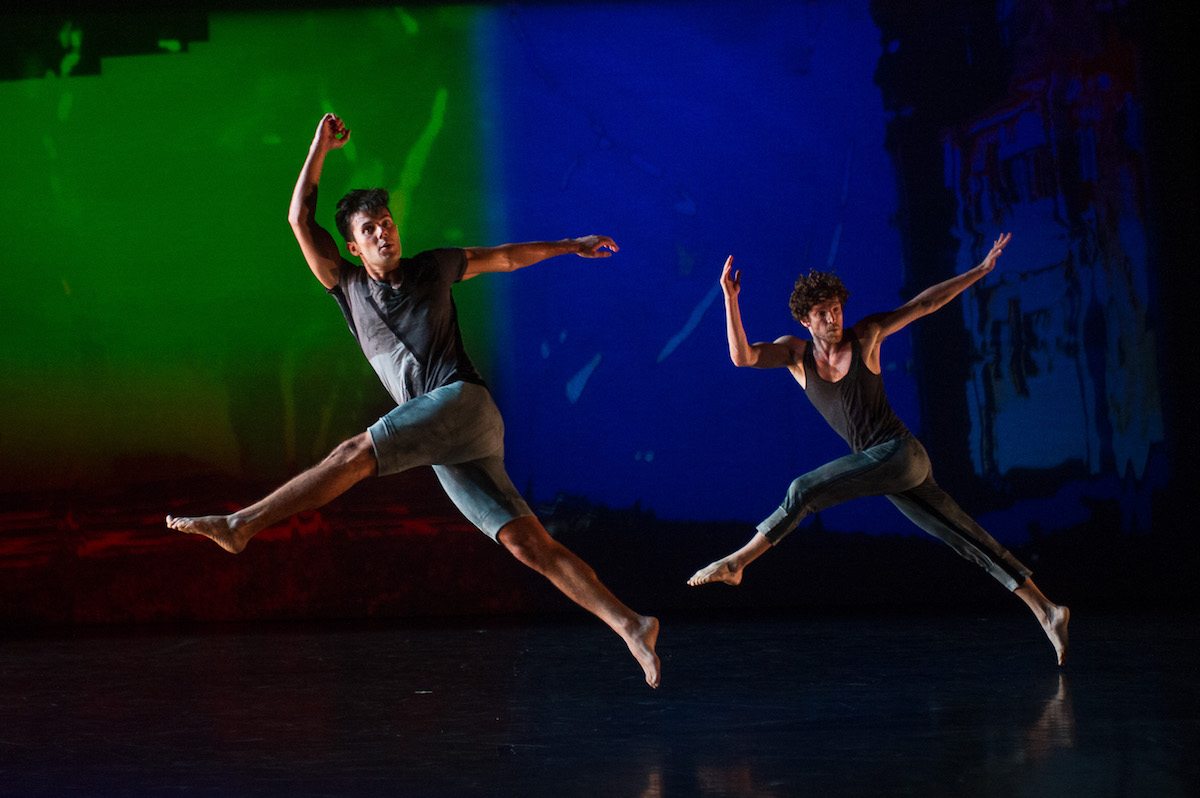Introduction
Liz Gerring choreographs athletic, abstract, intriguing dances. Her works are cool and intellectual, on the one hand, as they resonate with postmodern dance’s interest in minimalism. On the other hand, the sheer exuberance of the gorgeous dancers bounding through space—swinging, balancing, leaping—keeps the work squarely in the realm of the highly physical. Writing in the New York Times, Alastair Macaulay says,
What you see is what you get. This is not choreography that turns into poetic images, metaphors, stories, anything other than itself.”
Dance and Music
One thing that allows the choreography to be itself is the relationship between the dancing and the music.
In her essay, “Musings on abstract choreography,” Gerring writes,
Music is often considered the most central element in dance of all forms—and this is certainly true for me. My first steps in childhood as a dancer were a response to music and that response still exists. Music is often the initial inspiration and the guiding force behind my choreography—in modern abstract dance this music is often referred to as ‘sound’ and sometimes created on the computer with few recognizable ‘instruments’. This sound works well with modern dance—allowing the choreography room to assert itself without having to adhere to a set score.
Gerring’s longstanding collaboration with the company’s musical director/composer Michael J. Schumacher underscores her identification of music’s critical place in her creative process. They met when they were students at Juilliard.
As Pillow scholar in residence Nancy Wozny explained in a pre-performance talk, Gerring:
“frames music as a sonic element in which the dance takes place. There are places when movement and sound come together, but mostly, these are co-existing events that occupy the same space in a way where they each leave room for the other. The mix creates an expansive environment and sets up a dynamic tension between sound and movement evoking a feeling of suspense throughout the piece.”
In 2013, Liz Gerring Dance presented She Dreams in Code in the Doris Duke Theater.
The company returned to the Pillow in 2015 with glacier (2013), the same year that Gerring was awarded the Jacob’s Pillow Dance Award.
Interview with Gerring
In a PillowTalk in 2015, Gerring spoke with Nancy Wozny about her creative process, the making of Glacier, and her collaboration with Schumacher.
Janine Parker, writing for the Boston Globe, said glacier “should be required viewing for any dance composition student…[It] is a marvel of construction and deconstruction, of simplicity and complexity, of morphing dynamics.”Janine Parker, “Liz Gerring Dance Company’s ‘glacier’ is a marvel at Jacob’s Pillow” Boston Globe, August 22, 2015.

Liz Gerring’s dancers understand velocity. They embody endurance, as they move through Gerring’s ambitious, visceral abstract works.
PUBLISHED March 2017

